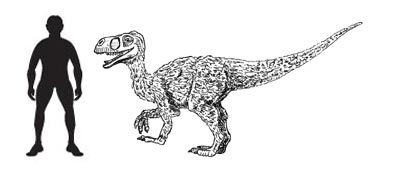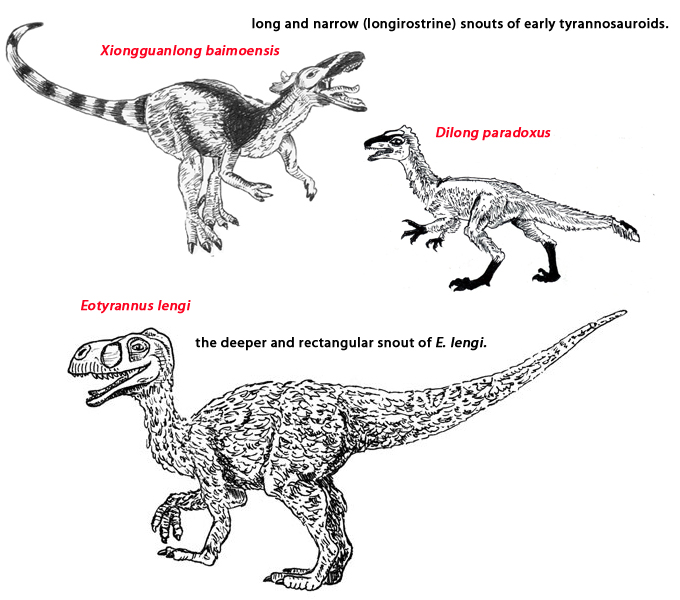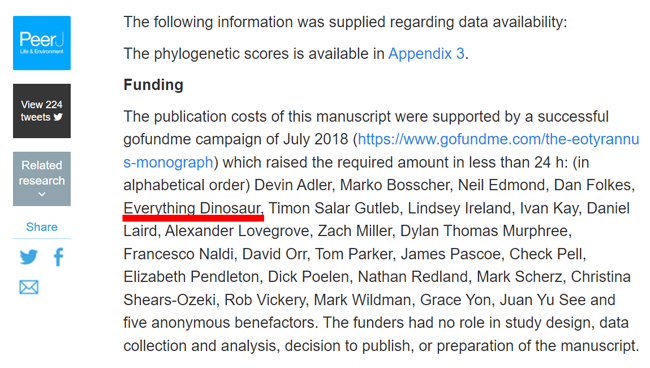The Eotyrannus Monograph – A New Scientific Paper
A new scientific paper on the Early Cretaceous tyrannosauroid Eotyrannus lengi has been published. It is confirmed as a valid genus and the phylogenetic assessment places the enigmatic Megaraptora clade within the Tyrannosauroidea superfamily.
First named and scientifically described back in 2001 (Hutt et al), Eotyrannus is helping to provide significant insights into the early evolution of tyrannosauroids as well as potentially redefining how enigmatic “megaraptors” such as Australovenator, Megaraptor and the recently described Maip macrothorax fit within the Theropoda.

The Carnivorous Dinosaurs of the Wessex Formation
Since the first fossils of Eotyrannus were found (1997), this theropod has attracted a lot of scientific interest. It is one of numerous carnivorous dinosaurs associated with the Wessex Formation (part of the Wealden Supergroup), indeed, back in 2021 we blogged about two new members of the Baryonychinae named and described from fossil remains found on the Isle of Wight (Wessex Formation). Last month, we wrote about an even bigger predator, an as yet, unnamed spinosaurid known as the “White Rock spinosaurid”.
For the article on the recently described baryonychids Ceratosuchops inferodios and Riparovenator milnerae: Two New Spinosaurids from the Isle of Wight.
To read about the Isle of Wight “White Rock spinosaurid”: Super-sized Isle of Wight Carnivorous Dinosaur.
The newly published paper provides further information on Eotyrannus autapomorphies (characteristic traits) that help to distinguish it from the often, fragmentary remains of other theropods associated with the Wessex Formation.

Deciphering the Fossil Evidence
Many of the fossil bones associated with the Eotyrannus genus remain entombed in their concrete-like matrix. Anatomical traits helping to define and classify this dinosaur are only beginning to emerge and there is a substantial amount of further preparation work required to permit a comprehensive analysis.
However, by combining all the new data since the formal description, the authors (Darren Naish and Andrea Cau) were able to produce a new skeletal reconstruction. The maxilla is confirmed as being quite rectangular in shape. Eotyrannus did not have the long, narrow snout (longirostrine) as seen in other early tyrannosauroids such as Dilong and Xiongguanlong from the Early Cretaceous of China. This suggests that longirostry evolved several times within the Tyrannosauroidea, perhaps in response to adaptations to permit these theropods to exploit a particular predatory niche.

Where do the Megaraptora Fit?
The scientific paper also incorporated a revised phylogenetic analysis of Eotyrannus. No significant support was found for Eotyrannus having a close evolutionary relationship to Juratyrant (J. langhami), known from the Late Jurassic of Dorset or indeed to the Late Jurassic early tyrannosauroid Stokesosaurus (S. clevelandi) from the western United States.
Instead, it is grouped with gracile, mid-sized tyrannosauroids that represent a more derived state than proceratosaurids, stokesosaurs and Juratyrant.
If megaraptoran dinosaurs are tyrannosauroids and therefore coelurosaurs, then this challenges long-held views on Theropoda classification and suggests that after the Early Cretaceous most of the hypercarnivore niches within dinosaur dominated ecosystems were increasingly occupied by coelurosaurs. It also suggests that tyrannosauroids were much more diverse and widespread during the Cretaceous than previously thought.
Eotyrannus remains a fascinating dinosaur, a genus that has led to new insights into the evolution and radiation of the Theropoda. It offers a tantalising glimpse into the ecology represented by the Wessex Formation deposits and how a mid-sized theropod co-existed with other, larger members of the ever-widening collection of Wessex Formation meat-eating dinosaurs.
Everything Dinosaur Helping to Fund Research
The authors wanted to make their paper available to everyone. To do this they set up a GoFundMe campaign to cover publishing costs. Everything Dinosaur assisted with the funding.
A spokesperson from Everything Dinosaur stated:
“We were happy to support this excellent paper and we helped to make such studies possible. Your purchases from Everything Dinosaur genuinely help science”.

The scientific paper: “The osteology and affinities of Eotyrannus lengi, a tyrannosauroid theropod from the Wealden Supergroup of southern England” by Darren Naish and Andrea Cau published in PeerJ.

